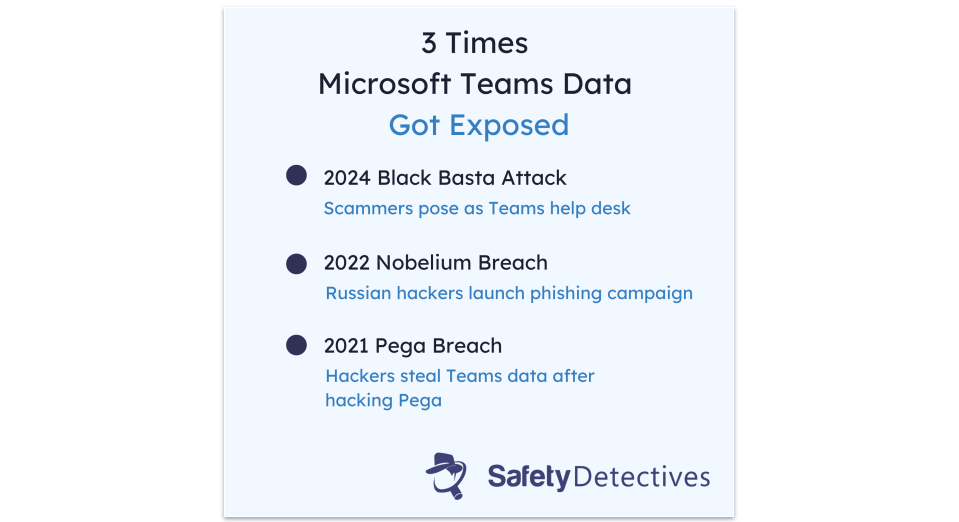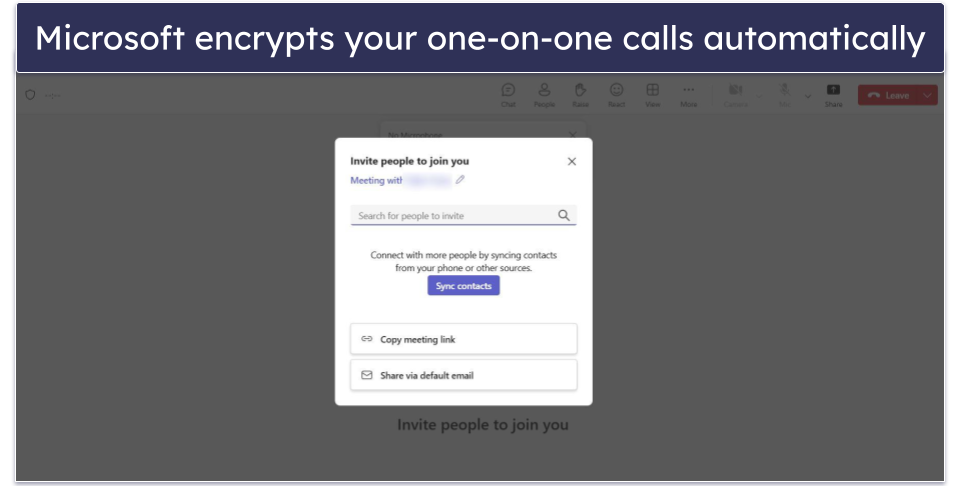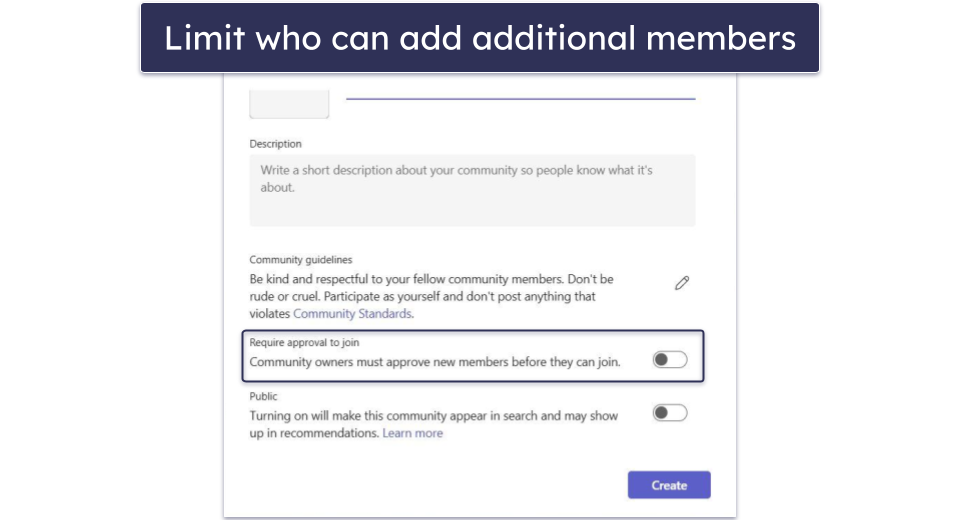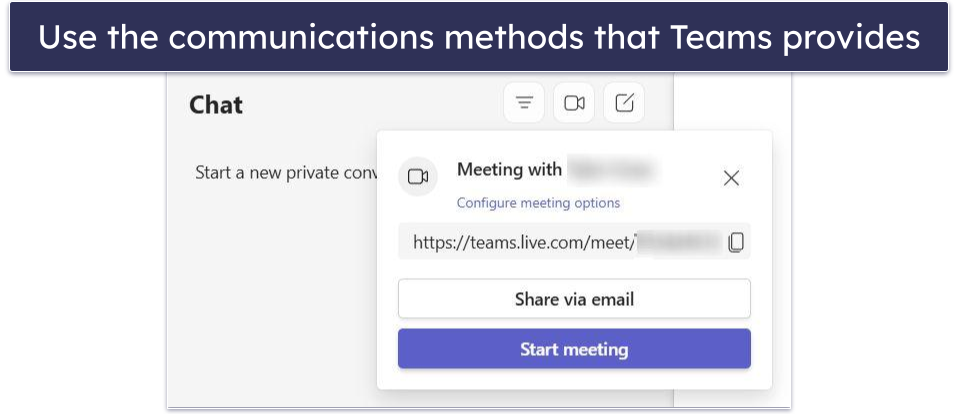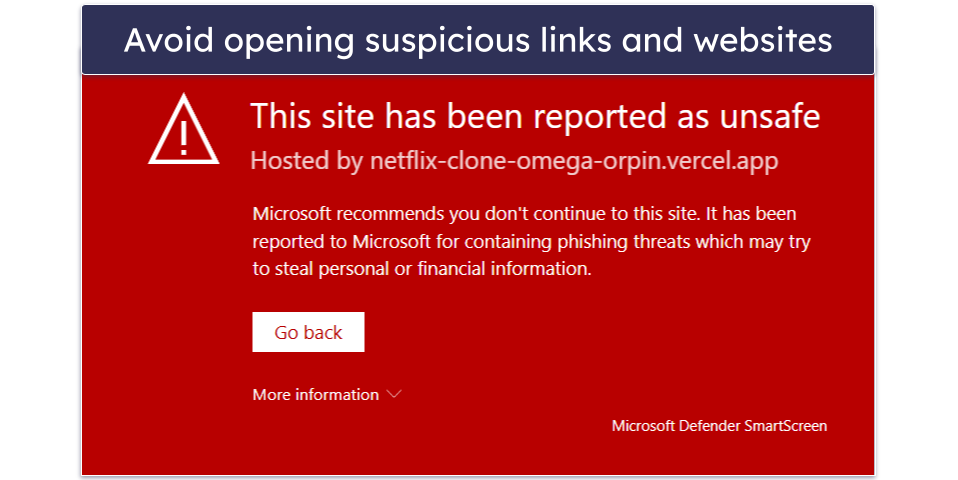
Tyler Cross
Updated on: November 14, 2024
Fact-checked by Kate Davidson
Microsoft Teams is secure enough, but it’s not without risks. If you’re using Microsoft Teams improperly, you leave yourself exposed to data breaches, phishing scams, and even crippling hacks that might result in losing your Microsoft Teams community.
I put together this article to highlight exactly what the dangers are and how you can avoid them. Basically, a lot of it comes down to user responsibility. If you don’t go through the effort of protecting yourself, nobody else can.
That said, there are tools you can use to give yourself an advantage against hackers. For example, you can leverage multi-factor authentication (MFA) to control logins or prevent users from adding other members. I also recommend installing a good password manager like 1Password to make sharing passwords and sensitive data much safer.
Is Microsoft Teams Safe?
When using Microsoft Teams, there are 2 types of threat to be aware of. There are external threats like bad actors who want to steal your data and internal threats such as a team member sending the wrong person their password or clicking on a malicious link.
Microsoft Teams has a decent range of built-in security features that handle a lot of this for you. It lets you enable MFA, limit who can send data or bring in new members, and more. Overall, it’s pretty safe to use, but you still need to be responsible while using it.
Before we delve into tips and tools for using Teams safely, let’s review what security features it has, whether or not it’s been breached in the past, and what the dangers actually are.
Microsoft Teams Security Features
Microsoft Teams includes a variety of built-in features to protect users and their data:
- End-to-end encryption: Teams supports end-to-end encryption for one-on-one calls. This prevents people from stealing your data or spying on your calls without an invite.
- Data encryption: All data sent through Teams is encrypted, both as it travels across the internet and when stored, ensuring messages, files, and meetings stay protected.
- Multi-factor authentication: You should be using an MFA app, such as Microsoft Authenticator, while using Teams. Teams lets you use a variety of authentication apps, so you can take your pick.
- Advanced threat protection: Microsoft Defender for Office 365 integrates with Teams to offer real-time protection against phishing, malware, and other cyber threats, particularly in shared files and messages. That said, it’s not as powerful as a good antivirus, so I’d also recommend looking into one of those separately.
- Compliance and information protection tools: For organizations, Teams include compliance features, such as data loss prevention (DLP) and retention policies, which help prevent sensitive information leaks and meet regulatory standards.
These features work together to provide a strong security baseline for Microsoft Teams, but as you’ll see, they’re not perfect.
Has Teams Been Breached?
The answer is complicated — Microsoft Teams has never had an official data breach, nor have hackers ever cracked its encryption, but third-party companies using Teams get breached frequently. Most of the time, the failure actually falls on the third-party company. Let me illustrate this point better with some examples:
- Black Basta (2024): The Black Basta ransomware group posed as the Microsoft Teams help desk to trick users into freely giving up their personal information and logins. This is a typical phishing scam.
- Nobelium attack (2021): Threat actors, believed to be Russian state-sponsored hackers, used a series of phishing scams to attack privileged Teams accounts and gain access to them as part of the larger SolarWinds campaign.
- Pega Breach (2021): Hackers exposed some Microsoft Teams accounts after breaching the third-party company, Pega. Hackers went on to use this information to attack specific Teams users.
As you can see, in all of these attacks, hackers took advantage of third-party companies, targeting them with phishing campaigns to gain access to sensitive Microsoft Teams data.
What Are the Dangers of Using Teams?
Despite its security features, there are risks to be aware of when using Microsoft Teams:
- Phishing Attacks: Teams users are still vulnerable to phishing attempts where attackers may impersonate trusted contacts to trick them into revealing sensitive information. If you don’t have a good antivirus with web protection like Norton or Bitdefender, just clicking a bad link might expose your whole company.
- External File Sharing Risks: When sharing files, including passwords, with external users, sensitive information can accidentally be exposed, especially if access permissions are not managed carefully.
- Account Compromise: Without strong passwords and MFA, user accounts on Teams can be vulnerable to unauthorized access, which could compromise personal or company data. If a hacker steals someone’s account, they can see and do anything that Team member can.
- Potential Data Retention Issues: Files and messages may remain accessible unless properly managed through retention policies, posing a privacy risk if sensitive data is not appropriately deleted or archived.
If you ignore these risks, you’re putting not just yourself but every one of your Team members in danger of having their data exposed in a breach. This can lead to them being targeted by follow-up phishing scams, usually aimed at stealing their financial information or additional company secrets.
How to Use Microsoft Teams Safely (Tips & Tools)
There are many considerations when it comes to using Microsoft Teams properly. It may have decent built-in security features, but you still have the responsibility of making sure you’re using it responsibly. While some of these may not apply to you, you should carefully review each of the following tips for using Microsoft Teams.
- Enable MFA: You should take advantage of something like Microsoft Authenticator to add extra layers of security to logins. This way, even if a hacker obtains your Teams account, they won’t be able to log in without your authentication app.
- Use end-to-end encryption during calls: Microsoft Teams offers end-to-end encryption for one-on-one calls, which is great for extra privacy for conversations containing sensitive data.
- Limit your team members’ ability to add new members: While external communication has to happen sometimes, you need to make sure that people can’t just add whoever they want to call. Otherwise, you might find spies or hackers infiltrating your Microsoft Teams and stealing data.
- Use private channels during communication: Use Teams to set up private channels for team members during sensitive communications. That way, you have full control over who has access to sensitive discussions.
- Keep your system and Teams updated: Regularly update Teams and all of your devices to ensure that you have the latest security patch. Typically, these fix vulnerabilities that hackers can take advantage of.
- Be careful opening suspicious links: Phishing links can sometimes appear in chat messages, so always verify links before clicking. If you receive a sensitive request that seems out of the ordinary, confirm the sender’s identity directly.
- Educate your team members on healthy online practices: You should always educate your team on how to use Teams, how to avoid suspicious links, and what to do in case something goes wrong.
- Use a password manager: Sharing passwords over Microsoft Teams is less secure than doing so with a good password manager. A product like 1Password provides an encrypted data vault of passwords and a simple sharing system that gives you more control over who can access what than Teams does.
- Install a good antivirus: A reliable antivirus will come with 2 important tools for protecting Microsoft Teams: anti-phishing protection and a good malware scanner. The former prevents you from opening malicious links or attachments online, while the latter keeps your computers clear of spyware, trojans, and other devastating forms of malware.
- Use a VPN: A virtual private network, or VPN, automatically encrypts all of your incoming and outgoing network data. This ensures that hackers won’t be able to intercept any of your communications. VPNs might slow your connection down, but the best ones like ExpressVPN are fast enough to maintain high-quality calls.
Editors’ Note: ExpressVPN and this site are in the same ownership group.
Frequently Asked Questions
Is password sharing over Teams safe?
Sharing passwords over Microsoft Teams or any communication service is generally unsafe. Messages in Teams are encrypted, but password-sharing opens up risks, especially if an account or message history is accessed by someone else. Even if hackers aren’t able to outright steal your password, you have to be sure that whoever you’re giving it to will use it responsibly.
It’s much easier to use a good password manager instead. 1Password, for example, comes with built-in password-sharing features that significantly reduce the risk of having your passwords falling into the wrong hands.
How do I avoid phishing scams using Microsoft Teams?
To avoid phishing scams on Microsoft Teams, always verify unknown senders and look for any red flags, including poor grammar, unfamiliar links, or urgent messages asking for sensitive information.
Phishing scams often impersonate trusted sources, so verify the sender’s identity if you’re unsure. Microsoft Teams includes built-in security features to help filter out suspicious messages, but staying cautious is essential. Use multi-factor authentication (MFA) for added account security, and install web protection tools, like the kind included in Norton’s antivirus suite.
Has Microsoft Teams been breached?
While Teams specifically has not been breached, third-party companies that use Microsoft Teams accounts have been. If a hacker can steal a company’s Microsoft Teams account, it’s highly likely that they will go on to cause damage to that company, either in the form of posing as an employee to steal more data or by leaking what they already know to the public.
How can I make Microsoft Teams safer?
To increase the security of your Microsoft Teams experience, follow these basic steps:
- Use multi-factor authentication: Enable MFA to add an additional layer of security to your account.
- Limit guest access: Restrict who can join meetings or access shared files, especially if sensitive information is involved.
- Stay updated: Ensure your Teams app is up to date, as updates often include important security patches.
- Avoid sharing sensitive data: Refrain from sharing passwords, credit card details, or personal information directly in Teams messages (hint, password managers work much better for this).



